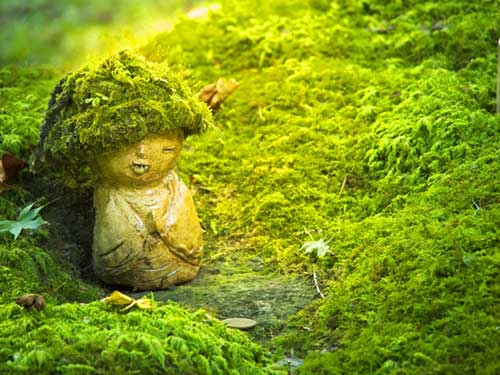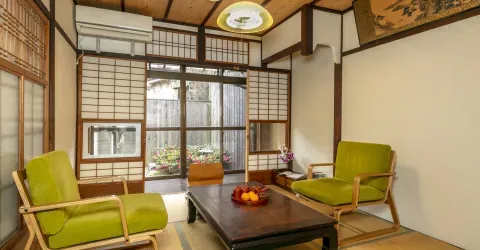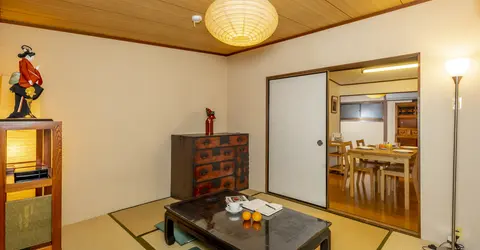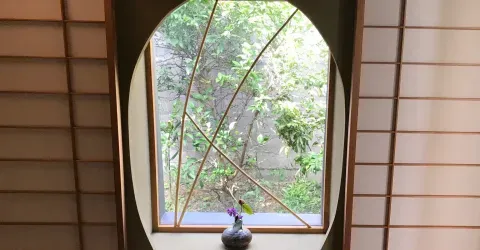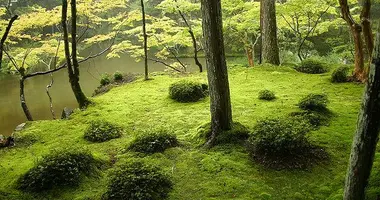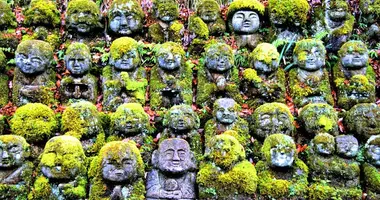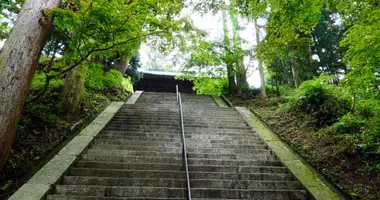Sanzen-in Temple Ohara: A serene oasis of history and beauty
- Published on : 30/06/2024
- by : Japan Experience
- Youtube
Nestled in the picturesque village of Ohara, just an hour north of Kyoto, lies the enchanting Sanzen-in Temple. This Tendai sect temple, established in the late 8th century, offers visitors a serene escape from the bustling city life. As you approach the temple grounds, you'll find yourself surrounded by lush greenery and a tranquil atmosphere that immediately transports you to another world. Sanzen-in is renowned for its stunning gardens, rich history, and breathtaking autumn colors. Whether you're a history enthusiast, a nature lover, or simply seeking a moment of peace, Sanzen-in Temple promises an unforgettable experience that will leave you in awe of Japan's cultural and natural beauty.
History and significance of Sanzen-in Temple
Sanzen-in Temple boasts a rich history dating back to the late 8th century. It was founded by Saicho (767-822), also known as Dengyo Daishi, who introduced Tendai Buddhism to Japan. Saicho, a revered figure in Japanese Buddhism, also established the famous Enryakuji Temple on nearby Mt. Hiei.
The temple's name, Sanzen-in, wasn't officially adopted until 1871, following documentation written by Emperor Reigen. Throughout its history, Sanzen-in has held a prestigious status as one of the five Monzeki Temples in Kyoto, where members of the Imperial family traditionally served as head priests. This unique distinction places it alongside other notable temples such as Manshuin and Shoren-in.
The temple underwent several reconstructions and expansions over the centuries. In 860, it was rebuilt by the priest Joun on Emperor Seiwa's orders. From the 12th century onwards, members of the imperial line began serving as abbots, starting with the second son of Emperor Horikawa. This imperial connection further elevated Sanzen-in's importance in Japanese Buddhist history.
Exploring the temple grounds and architecture
As you enter Sanzen-in, you'll be greeted by a series of interconnected buildings, each with its own unique charm and significance. The first major structure is the Kyakuden or Guest Hall. This building, once the residence of the temple's abbots, now serves as a showcase for numerous treasures. Inside, you'll find exquisite tatami rooms adorned with painted byobu screens and decorated sliding doors (fusuma).
Connected to the Kyakuden by a wooden walkway is the Shinden or Main Hall. This building houses important Buddhist statuary, including images of Amida Buddha, Kannon, and Fudo Myo-o. The ceiling of the Shinden is particularly noteworthy, shaped like the bottom of a boat and decorated with intricate mandalas painted by the priest Enshin.
Perhaps the most historically significant building on the grounds is the Ojo Gokuraku-in Hall, also known as the Hall of Rebirth in Paradise. Dating back to 985, it's the oldest structure in Sanzen-in. Inside, you'll find a 2.3 meter-tall, gilded statue of Amida Buddha, flanked by the attendant deities Kannon and Seishi.
As you explore the temple grounds, you'll notice how the architecture seamlessly integrates with the natural surroundings, creating a harmonious blend of man-made structures and nature's beauty.
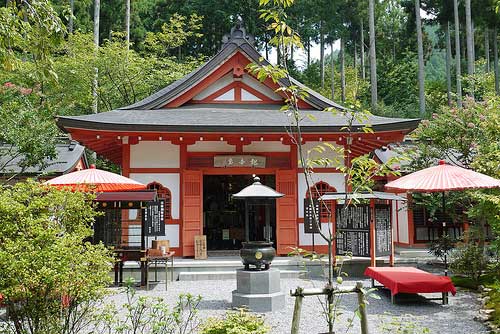
The enchanting gardens of Sanzen-in
Sanzen-in is particularly famous for its stunning gardens, which offer a different but equally captivating experience in each season. The main garden areas are the Shuheki-en Garden and the Yusei-en Garden.
The Shuheki-en Garden, visible from the Kyakuden, is a traditional Japanese garden featuring a small pond and an artificial hill. This "Garden That Gathers Green" provides a serene view that perfectly complements the temple's tranquil atmosphere.
However, it's the Yusei-en Garden that truly steals the show. Often referred to as the "Pure Pleasure Garden," this moss garden is a breathtaking sight. The garden floor is covered in a lush carpet of vibrant green moss, punctuated by towering cryptomeria and maple trees. Carefully placed rocks and shrubs add depth and interest to the landscape, while a carp-filled pond reflects the surrounding beauty.
One of the most charming features of the garden are the amusing stone statues of Jizo that peek out from the moss. These impish figures add a touch of whimsy to the otherwise serene setting. As you wander through the garden, you'll discover new vistas and hidden corners, each offering a unique perspective on this masterpiece of landscape design.
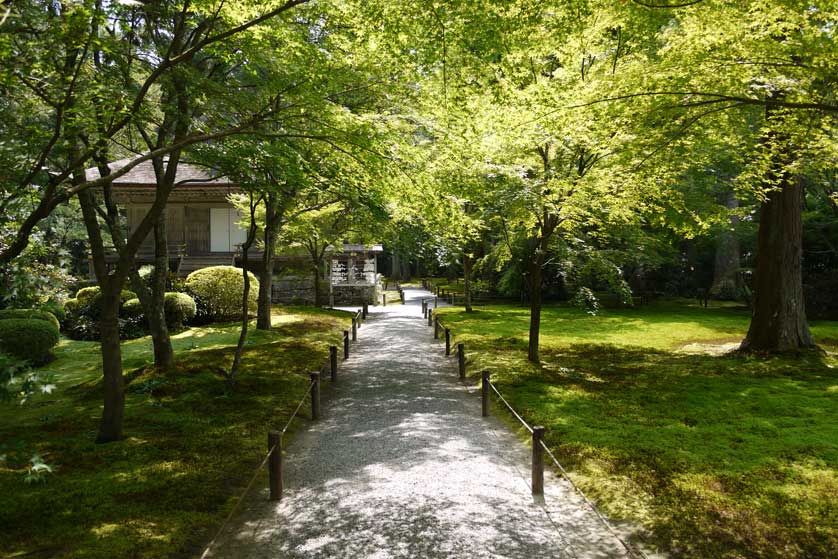
The temple is known for the beauty of its garden

Moss-covered stone figure, Sanzen-in Temple, Kyoto
Cultural treasures and important artifacts
Sanzen-in houses a wealth of cultural treasures and important artifacts that offer insight into Japan's rich Buddhist heritage. The temple's most prized possession is undoubtedly the statue of Amida Buddha in the Ojo Gokuraku-in Hall. This gilded figure, accompanied by the attendant deities Kannon and Seishi, is considered a National Treasure of Japan.
In the Shinden, you'll find an image of Yakushi-Nyorai, the Buddha of Healing. This statue is particularly significant as it's believed to have been carved by Saicho himself, the temple's founder.
The temple also houses numerous works of Japanese calligraphy and paintings, many of which adorn the sliding doors and screens throughout the buildings. These art pieces not only beautify the temple but also serve as important historical documents, offering glimpses into the artistic styles and techniques of different periods in Japanese history.
Near the Kannon-do Hall, you'll find rows of miniature Kannon statues donated by pilgrims over the years. These small figures, each representing a personal prayer or wish, create a poignant display of faith and devotion.
For those interested in delving deeper into Sanzen-in's treasures, the temple has a small museum that displays additional artifacts, including manuscripts and religious items from various periods of the temple's long history.
Visitor information and practical tips
To make the most of your visit to Sanzen-in Temple, here are some practical tips and information:
- Opening hours: The temple is open from 8:30 am to 5:00 pm from March to December 7th, and from 9:00 am to 4:30 pm from December 8th to February.
- Admission fee: The entrance fee is 700 yen for adults, 400 yen for high school and junior high school students, and 150 yen for elementary school students.
- Access: From Kyoto Station, take Kyoto Bus #17 to the Ohara bus stop (about 60 minutes). From there, it's a 10-minute walk to the temple.
- Best time to visit: While beautiful year-round, the temple is particularly stunning during the autumn colors in mid-November and the hydrangea season in June.
- Visitor etiquette: Remember to remove your shoes before entering temple buildings and maintain a respectful quiet in the gardens and halls.
- Photography: Photography is generally allowed in the gardens, but may be restricted in some of the temple buildings.
For more detailed information, you can visit the temple's official website at sanzenin.or.jp.
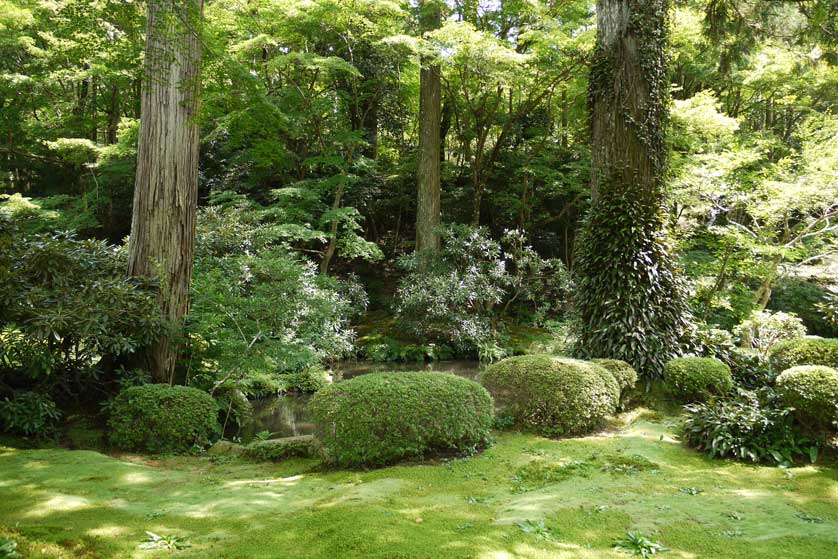
Sanzen-in Temple, Ohara, Kyoto
Seasonal highlights and best times to visit
Sanzen-in Temple is a year-round destination, with each season offering its own unique charm. However, certain times of the year are particularly spectacular:
- Spring (March to May): The temple grounds come alive with cherry blossoms and azaleas. The fresh green of new leaves creates a vibrant backdrop for the moss garden.
- Summer (June to August): This is the season for hydrangeas, which bloom in abundance around the Konjiki-Fudo Hall. The lush greenery of the moss garden is at its peak during this time.
- Autumn (September to November): Sanzen-in is famous for its autumn colors, typically reaching their peak in mid-November. The contrast between the fiery red maple leaves and the green moss creates a breathtaking scene.
- Winter (December to February): While colder, winter offers a unique beauty with occasional snowfall creating a serene, monochrome landscape.
For the best experience, try to visit early in the morning to avoid crowds, especially during peak seasons like autumn. Weekdays are generally less busy than weekends and holidays.
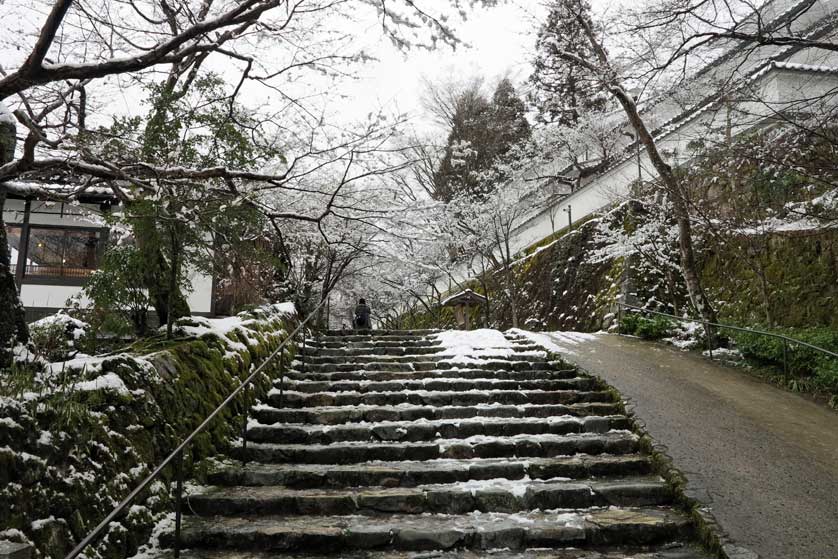
The approach to Sanzen-in Temple in winter, Kyoto, Japan
Surrounding attractions and experiences in Ohara
While Sanzen-in is the main attraction, the village of Ohara offers several other interesting sites and experiences:
- Jakko-in Nunnery: Another important temple with a tragic history, known for its beautiful garden.
- Housenin: A smaller temple famous for its "bloody ceiling" and tranquil garden.
- Jikko-in: Known for its dry landscape garden and traditional tea house.
- Otonashi Waterfall: A small but picturesque waterfall near Raigo-in Temple.
- Local cuisine: Try Ohara's famous pickled vegetables, especially the "aisu-kyuri" (ice cucumber).
- Hot springs: Some ryokans in Ohara offer hot spring baths, perfect for relaxing after a day of sightseeing.
Consider making a full day trip to Ohara to fully appreciate the area's natural beauty and rich cultural heritage. The combination of Sanzen-in's serene gardens, the village's rural charm, and the surrounding natural scenery makes for an unforgettable experience away from the hustle and bustle of central Kyoto.
